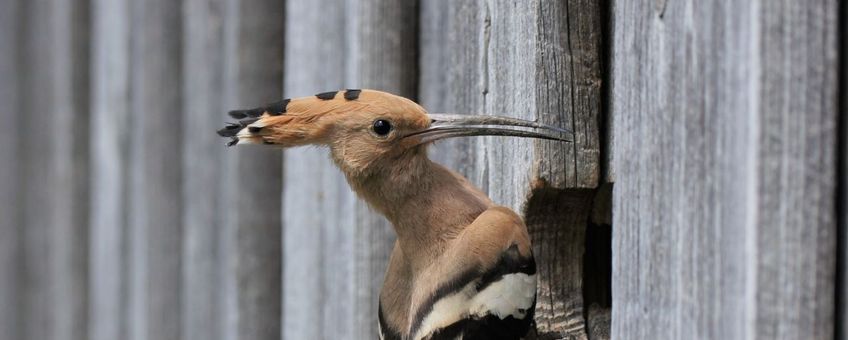
Genetics show that Hoopoes have overcome risk of extinction by exchange of populations throughout Europe
Heidelberg UniversityThe Hoopoe is a bird that is hard to miss, because of its distinctive appearance and characteristic song. It breeds widely in Eurasia where it seems very site-faithful, meaning that they breed in the same place each year, and most populations migrate to Africa during the winter. For decades, the Hoopoe has experienced population declines in Europe and has been placed on the Red List of endangered bird species in western and central Europe. Although it was recently reported that the Hoopoe population has strongly increased in south-west Switzerland, scientists from Heidelberg University detected recent bottleneck signals among the European Hoopoe populations by using genetic markers (mitochondrial DNA and microsatellites).

"Interestingly," Erjia Wang (Institute of Pharmacy and Molecular Biotechnology, Heidelberg University) explains, “we found that Hoopoes among the European populations are genetically identical, which means that all the hoopoes in Europe share the same ancestor and came from the same origin.”
Another interesting finding is that the population in Armenia, far away from the central European populations, exhibits different genotypes compared to other populations. “Distinct genotypes might be a consequence of recent genetic restriction. In future times, genetic diversity might further increase and finally even manifest itself in speciation.” explained Erjia Wang. “Thus, perhaps we are witnessing the evolution of a new (sub)species of Hoopoes as we speak.”
Finally, the genetical results showed that owing to the limited genetic exchange with other populations, the resident population in the Canary Islands still faces potential extinction. On the contrary, the Swiss and Austrian populations have overcome the former extinction risk.

Analyses of DNA can help to reveal many ‘hidden secrets’ which would be difficult to get a grip on otherwise. For instance, it would take years of intensive ringing and recapturing of birds throughout a bird’s breeding range to establish a current network of exchange of populations and even then, probably the evidence will be few, incomplete and inconclusive. Microsatellite and mitochondrial DNA analyses, as used in this study, can thus prove to be useful and relatively ‘simple’ tools for reconstructing the evolution of different populations over vast areas and extensive time scales.
The findings of this study have been published in the scientific journal Molecular Phylogenetics and Evolution.
Text: Prof Michael Wink, Erjia Wang, Heidelberg University and Rien van Wijk, Swiss Ornithological Institute
Photo: Rien van wijk, Swiss Ornithological Institute; Figures: Elsevier
